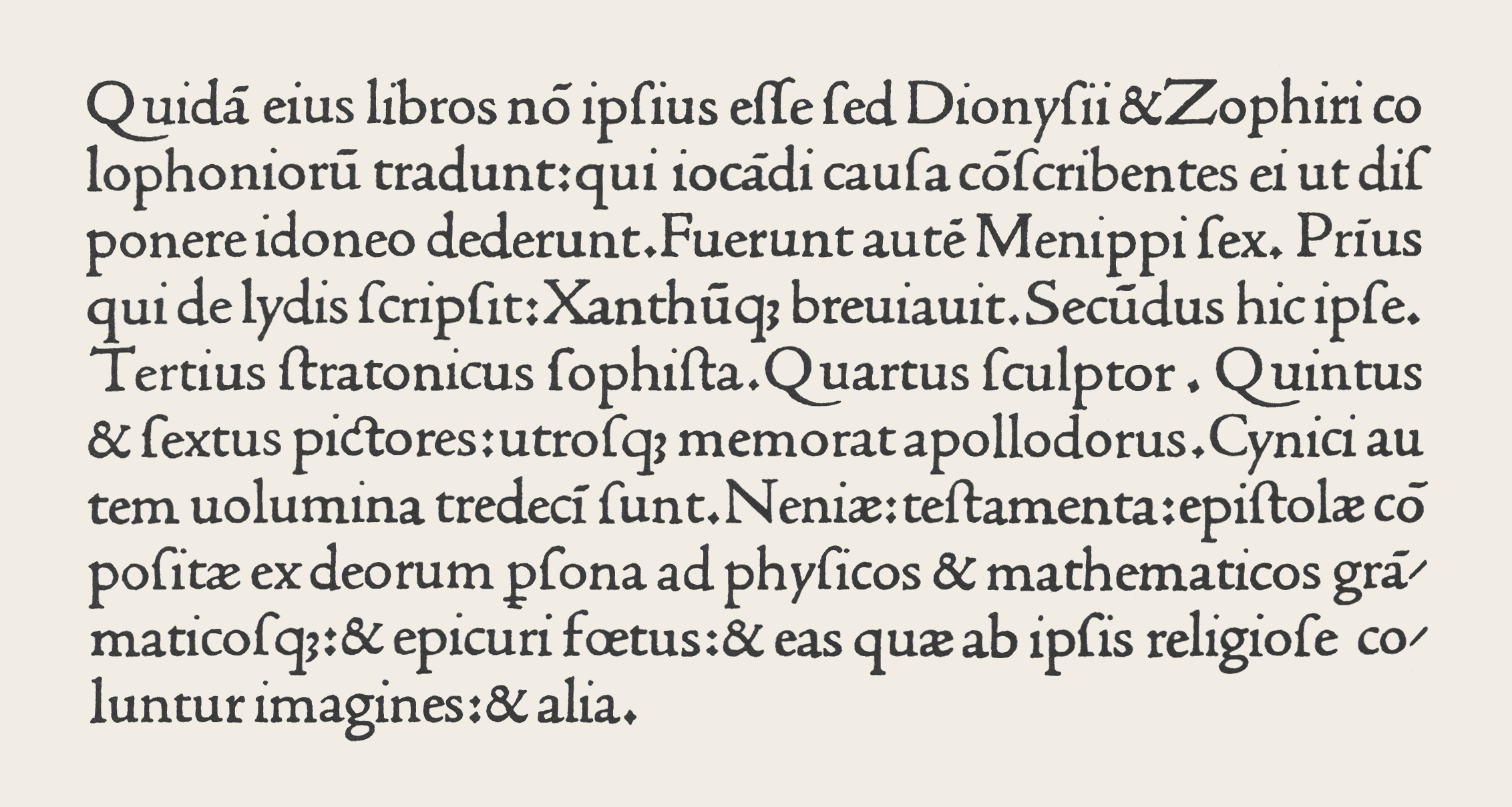Nicolas Jenson and the success of his roman type, Riccardo Olocco, April 4, 2017.
During the 1470s Nicholas Jenson’s technical skill and business acumen helped establish Venice as Italy’s publishing capital and in centuries since he has been celebrated for perfecting roman type, the rebirth of Latin inscription.
Jenson’s fame as one of history’s greatest typeface designers and punch cutters rests on the types first used in his edition of Eusebius’s Praeparatio Evangelica, which presents the full flowering of the roman type design.[8][9]
In 1471, a Greek typeface followed, which was used for quotations, and then in 1473 a Black Letter typeface, which he used in books on medicine and history.
Caesar, Julius. Works, 1471. Printed in Venice by Nicolas Jenson, 1471
Nicolas Jenson printed one of the earliest and most beautiful editions of Caesar. We note here, especially the remarkable clarity and simplicity of the printer’s Roman typeface, which drew its inspiration from etchings on Roman monuments. On this opening page, we are also treated to a wonderful illuminated initial and border.[14]
VK 405, Bible in Latin, Nicolas Jenson, Venice, 1479
The Bible was written by forty different human authors over a 1500-year period. While the original Autographs were “perfect”, the process of hand-copying resulted in derivations from the original texts. Of the French printers of the era from Nicolas Jenson came nearly a hundred of the finest books produced in the fifteenth century. This is the first Bible to be issued from Jenson’s press, of this Latin Bible, issued in 1479, Pope Sixtus IV conferred upon him the honorary title of Count Palatine.[15]
Pliny, Natural History, 1476. Printed in Venice by Nicolas Jenson. 1,025 copies (1,000 paper, 25 vellum).
The Pliny the Elder text was printed as a partnership venture between Jenson and the Strozzi family, who backed the venture financially. It is a vernacular text, with translation by Cristoforo Landino. “The Pliny text was printed (in a font closely simulating the modern humanist handwriting in which the manuscript of the work might have been written) with wide margins, without initial capital letters at the beginning of chapters, and with its titles isolated in a sea of blank paper on the frontispiece, crying out for illustration and decoration.”[16]
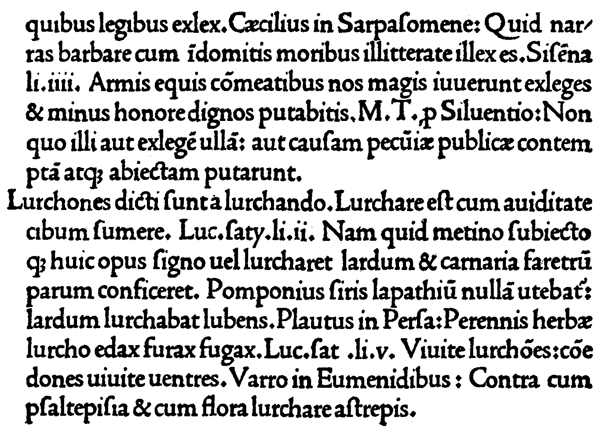
Roman type of Nicholas Jenson, 1472.
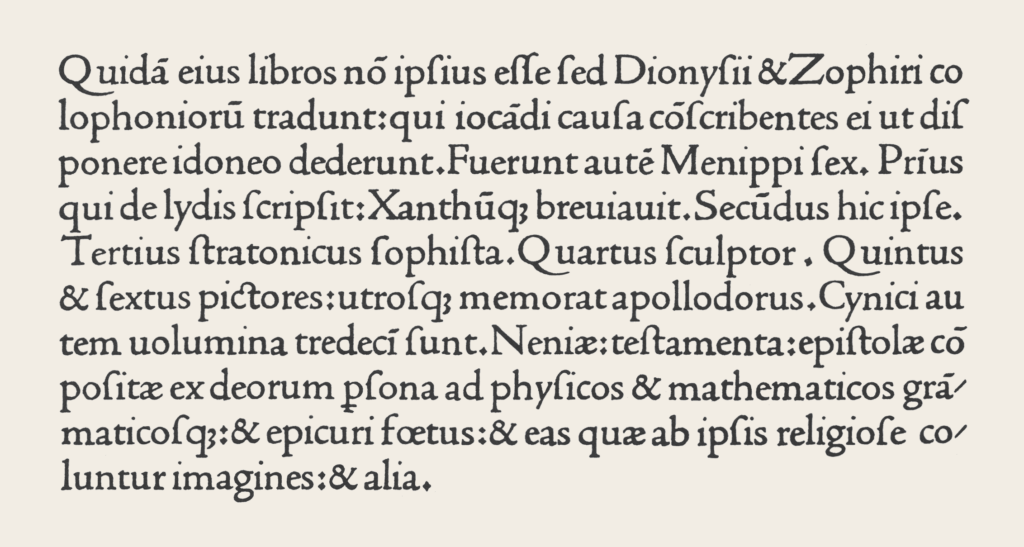
A specimen of Nicolas Jenson’s archetypal roman typeface, from the “Laertis”, published in Venice c. 1475.

Capitals of Nicolas Jenson’s roman typeface, from a translation ‘in Fiorentina’ (in Italian) of Pliny the Elder, published in Venice in 1476.
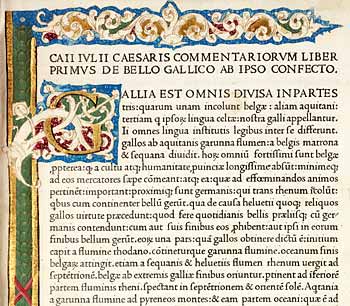
Julius Caesar’s Works, printer Nicolas Jenson, 1471
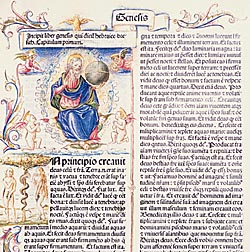
VK 405, Bible in Latin, Nicolas Jenson, Venice, 1479
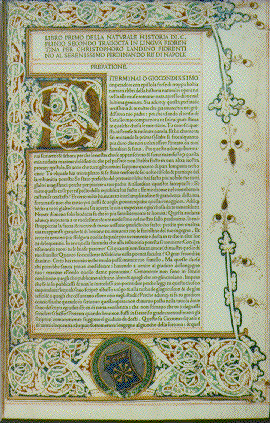
Pliny the Elder’s Natural History, printer Nicolas Jenson, 1476
